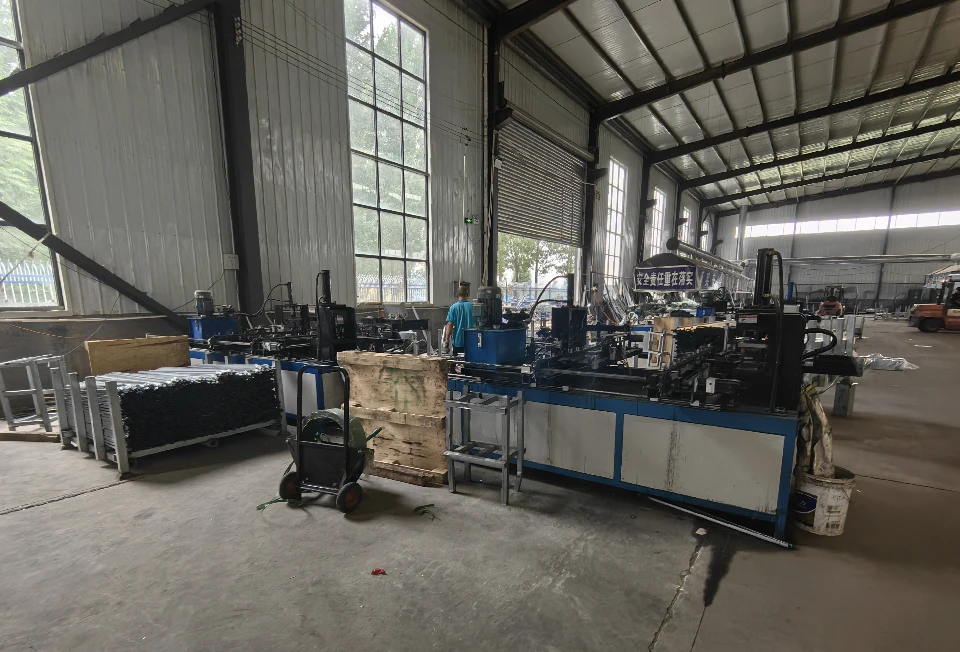Dec . 05, 2024 16:53 Back to list
Versatile Security Solutions Using Barbed Concertina Wire for Enhanced Protection and Safety
The Intricacies and Applications of Barbed Concertina Wire
Barbed concertina wire, a formidable barrier in security and defense, has a rich history and is often associated with both military applications and border security. This twisted wire, adorned with sharp barbs, is both a physical and psychological deterrent that has shaped the landscape of fencing and fortifications throughout the world. In this article, we will explore the characteristics, uses, and implications of barbed concertina wire while touching on its historical significance and modern applications.
Historical Background
The invention of barbed wire can be traced back to the late 19th century, a product of necessity that transformed agricultural practices. However, the evolution of barbed wire into concertina wire was a critical development, particularly during World War I. Concertina wire, designed to be easily deployed in a spiraled format, became a staple in trench warfare. Its ability to create an impenetrable barrier quickly proved invaluable, as it played a vital role in protecting troops and slowing down enemy advances.
Structure and Design
Barbed concertina wire typically consists of two main components the wire itself and the attached barbs. The wire is made from high-tensile strength steel, coated with corrosion-resistant materials to ensure durability against environmental elements. The barbs are strategically spaced along the wire, aimed at inflicting injury on anyone attempting to breach the barrier. When coiled, this type of wire forms a series of pointed loops that can be deployed in various configurations, making it a versatile option for a range of security scenarios.
The aesthetic appeal of concertina wire is often overlooked. Deployed in a deliberate, spiraling pattern, it creates an imposing visual barrier that serves not only as a physical deterrent but also as a psychological one. The sight of concertina wire can evoke a sense of danger and foreboding, making individuals think twice before attempting to cross it.
Modern Applications
barbed concertina wire

Today, barbed concertina wire is employed in a variety of settings aside from military use. It is commonly seen in prisons, to prevent escape attempts, and along national borders to deter illegal crossings and smuggling activities. Its application in protecting critical infrastructure— such as military bases, government buildings, and industrial sites— has become increasingly prevalent, especially in regions with high-security needs.
Moreover, the use of barbed concertina wire extends into riot control and crowd management
. It can be employed to cordon off areas and control the movement of large groups, reducing the risk of violence and ensuring that law enforcement can effectively manage potentially volatile situations.Ethical Concerns
While barbed concertina wire serves as a deterrent, its use raises significant ethical concerns. Critics argue that its deployment can lead to excessive force and injury, particularly in contexts involving migration and border security. The image of individuals entangled in sharp wire illustrates a stark reality about the effective but harsh measures taken to maintain security.
As geopolitical tensions rise and migration patterns shift, the role of concertina wire at borders becomes even more contentious. Advocates for humane treatment of migrants argue for alternatives to physical barriers that respect human rights while still addressing security concerns. The conversation around the use of barbed concertina wire thus intertwines with broader societal issues, reflecting the pressing need for a balance between security and compassion.
The Future of Barbed Concertina Wire
As technology advances, the future of barbed concertina wire may evolve. Innovations in fencing technology, including electronic surveillance systems and biometric access control, may supplement or even replace traditional forms of physical barriers. However, the psychological impact and deterrent effect of concertina wire may still hold value in certain contexts.
In conclusion, barbed concertina wire stands as a symbol of security and division in our contemporary landscape. Its historical roots in warfare, combined with its modern applications in civilian life, highlight the complex nature of security measures. While it effectively serves its purpose as a physical barrier, the ethical considerations surrounding its use cannot be overlooked. As society moves forward, a reexamination of the role of such barriers is essential in balancing the need for security with the values of compassion and respect for all individuals.
-
Reinforcing Mesh: Core Material of the Construction Industry
NewsJul.07,2025
-
Welded Wire Fabric Reinvented for Modern Projects
NewsJul.04,2025
-
Superiority of Stainless Steel Woven Mesh
NewsJul.04,2025
-
Key Types of Razor Wire and Their Applications
NewsJul.04,2025
-
Durable Metal Fence Types for Security
NewsJul.04,2025
-
Best Materials for Livestock Fence
NewsJul.04,2025
products.







